Black holes, bright birds and ice evaporating in the freezer all come under scrutiny in this week's Naked Science Question and Answer Show. We also find out why space is so cold, what happens when a neutron star collapses and where houseflies buzz off to in winter. Plus, we discover a robot who keeps kids company in hospital, and catch up with the the latest tech news about Twitter. Also, we hear how bats are louder than a rock concert, how a quantum trick could let birds see magnetism and we peer into the biggest eye in the animal kingdom - belonging to the Colossal Squid. Plus, in Kitchen Science, we get close to some hot rubber!
In this episode
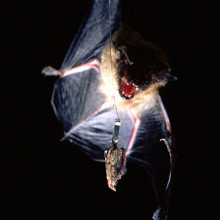
01:40 - Bats out of hell: it's official, bats are louder than a Meatloaf concert
Bats out of hell: it's official, bats are louder than a Meatloaf concert
Scientists studying the sounds produced by bats has shown that they are amongst the loudest creatures on earth, pumping out 140 dB.
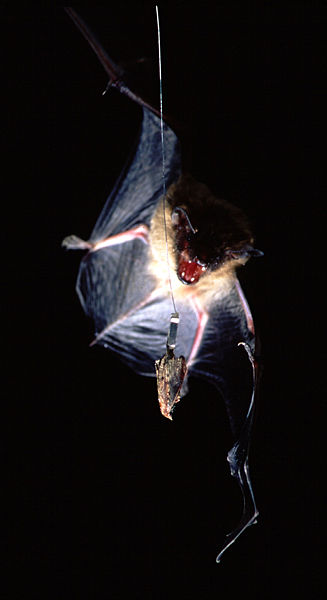 Thankfully, because it's in the ultrasound range, we can't hear it, but if we could it would certainly be an uncomfortable experience. The threshold for human noise-induced pain is about 130dB and, according to the Guinness Book of Records, the loudest ever rock concert was a gig by The Who which notched up a deafening 126 dB.
Thankfully, because it's in the ultrasound range, we can't hear it, but if we could it would certainly be an uncomfortable experience. The threshold for human noise-induced pain is about 130dB and, according to the Guinness Book of Records, the loudest ever rock concert was a gig by The Who which notched up a deafening 126 dB.
But writing in this week's PLoS One, Annemarie Surlykke and Elisabeth Kalko have found that some bats literally roar, producing sounds of 140dB. The researchers made the discovery when they recorded the nocturnal hunting habits of 11 species of insect-eating bats in Panama.
The bats use high-frequency sounds like the airborne equivalent of sonar, and find their way around and hunt for food by listening to echoes of the sounds they produce bouncing back from nearby objects. Measurements by the scientists show that the bats were producing sounds ranging from 25kHz to 70kHz and 125-140dB. The highest frequency that can be heard by a human is about 20kHz, which is why we're not aware of the racket.
The researchers also found that, on average, the higher the frequency used by the bats the louder the noise they produced. This is to be expected because higher frequency sounds are more rapidly damped-down as they travel through the air, which is why fog horns and other warning signals tend to use low pitches, which travel long distances more easily.
Overall, say the scientists, all of the animals had roughly similar ranges for their echolocation - up to about 10 metres - and they all cut down the intensity of the sound as they get nearer to their targets, so they do have a conscience when it comes to disturbing the neighbours!
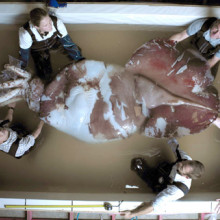
04:10 - A colossal catch
A colossal catch
Scientists this week have been unravelling some of the mysteries of the deep, with a specimen of the Colossal Squid that has been taken out of the freezer and slowly thawed at the Museum of New Zealand, Te Papa Tongarewa in Wellington. That is where is has been kept since it was caught by fishermen in the Ross Sea off Antarctica last year.
We know hardly anything about the Colossal squid - only eight have ever been found, mostly inside the stomachs of sperm whales. This specimen weighed nearly 500 kilos, or around the size of a young cow. With the tentacles stretched out, the squid is about ten metres long and it is thought they can grow to over fifteen metres.
One of the most extraordinary things they've discovered is its eye - bigger than a football with a lens the size of an orange, it's the largest eye in the animal kingdom and will help these illusive creatures hunt prey in the pitch black depths of the ocean when they can penetrate to two kilometres down.
Researchers thought the specimen was a male, but they found it had ovaries containing thousands of eggs making it undoubtedly a female. When they've finishing studying, the squid will be embalmed and preserved.
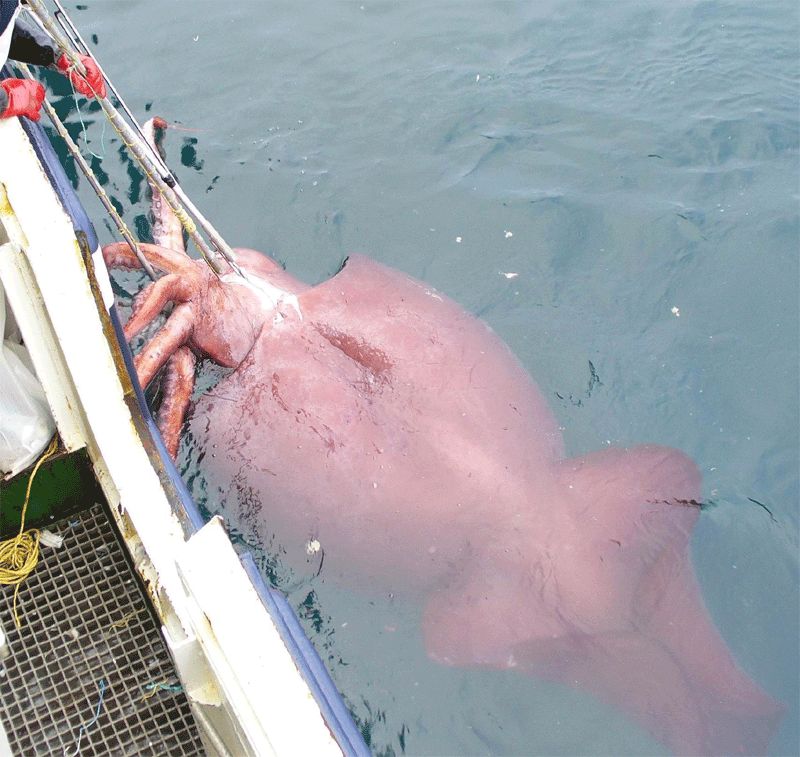
A few colossal squid facts:
- The scientific name for Colossal squid is Mesonychoteuthis hamiltoni
- This specimen was caught by a New Zealand long-line boat targeting Patagonian Toothfish in 2007.
- The species was first discovered in 1925, when the tentacles and head were found inside a Sperm Whale
- Many squid are cannibalistic, so the colossal squid might feed on each other.
- The squid's eyes are lined by a row of light-emitting photophores, which may help disguise the solid eyes from prey when they are hunting - the rest of the squid is transparent and so the solid eyes would appear as dark silhouettes without these lights.
- They are likely to be formidable predators, with barbed clubs at the end of their tentacles.
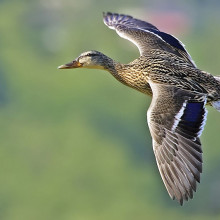
06:38 - Is this the basis of Bird Navigation?
Is this the basis of Bird Navigation?
Scientists have shown how birds might be able to see the Earth's magnetic field, helping them to navigate.
A team from Oxford University and Arizona State University, writing in this week's Nature, have uncovered a chemical trick that could enable some animals to see magnetic fields.
Peter Hore and his colleagues studied a molecule containing three key chemical groups, a carotenoid (C), a porphyrin ring (P) and a fullerene (F); this was chosen to mimic the behaviour of some of the light-sensitive pigments found in the retina. Using this molecule the team found that when they shone light of a certain wavelength at it, the CPF produced a pair of chemicals called free radicals, one at each end of the molecule.
Normally these free-radicals would quickly recombine and cancel each other out, but when the team applied a magnetic field similar in strength to the Earth's magnetic field, a quantum property of the radicals known as their electron "spin" was altered.Now, instead of spinning in opposite directions, known as anti-parallel spin, the electron spins because matched and this significantly affected how long the radicals took to cancel each other out.
"This could trigger a chemical in the eye to change shape, which could in turn kick-start other biochemical processes to enable a bird to see the Earth's magnetic field," says Hore. Birds could use this information as a reference frame to aid their navigation when visual cues aren't available, such as at night, and during flights over the ocean.
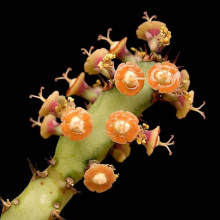
09:41 - Plant Aids in HIV Battle
Plant Aids in HIV Battle
Scientists have discovered how to make large amounts of a plant chemical which has potent anti-HIV effects.
Stanford researcher Paul Wender and his colleagues, writing in this week's Science, describe a chemical strategy to make two related plant molecules with potent anti-viral effects. The chemicals in question are DPP and prostratin, which are members of a family called phorbol esters. They're produced in tiny quantities by certain members of the Euphorbia family, Pimelea prostrata and a plant found in Samoa called Homalanthus nutans.
The chemicals are viewed by scientists as promising anti-AIDS candidates because they can attack the virus in two ways: they cause cells to reduce their numbers of viral receptors known as CD4 and CXCR4. The virus uses these receptors like Velcro to bind on to the surfaces of its target cells. Knocking down their numbers therefore makes it much harder for the virus to penetrate.
At the same time these agents also hit the virus during its latent phase of infection. This is where, after infection, the virus lies dormant, hiding inside the DNA of the infected host where it is invulnerable to drug therapies. Prostratin and DPP can provoke the virus to re-emerge from this hibernating state, which means they could also be used to help clear the virus from an infected individual's body.
At the moment UNAIDS estimates that 33 million people are living with HIV worldwide and the annual death toll is over 2 million. The anti-retroviral drugs we have at present, whilst effective at extending life, cannot cure the infection so there is an urgent need for new ways to hit back at HIV. Thanks to this new research scientists will be able to make these new agents, which have their origins in Samoan traditional medicine and seem to be well tolerated by the body, at reasonable levels, enabling researchers to better understand how they work and translate them from test-tubes to patients.
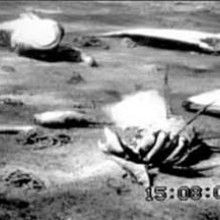
Bad news for the Colossal squid’s home
While we are still discovering such exciting things about illusive deep-sea creatures, there is also some worrying news this week about the state of the oceans that these creatures live in.
Scientists from the University of Kiel in Germany lead by Lothar Stramma have been studying the so-called 'dead-zones' of the oceans, and found that they are getting alarmingly bigger. These are areas where there is very little oxygen, and so most ocean life, including fish and those fantastic colossal squid are unable to survive - they are the equivalent of deserts in the ocean.
We've known for a while that in shallow seas the input of nutrients and pollutants from land can trigger these dead zones - there's a particularly large dead-zone in the Gulf of Mexico, for example.
But now, Stramma and colleagues have revealed that in intermediate depths, around 300 to 700 metres, there is an expanding mass of oxygen-poor water. Using data from research vessels around the world and also special fixed buoys equipped with oxygen sensors, they have discovered that over the past fifty years, areas of ocean that used to be oxygen rich are now what they term 'oxygen minimum zones' - where oxygen levels are so low most sea life will suffocate and die.
Areas of particular concern are in the tropical Atlantic, off the west coast of Africa and around the equator in the Pacific Ocean.
We can't be sure just what is causing the loss of oxygen; and there are natural fluctuations in levels due to global events like El Nino. But the finger of blame is pointing squarely at global warming and rising sea temperatures. Since warm water holds less oxygen and also does not sink like oxygen rich cold water, which would normally replenish oxygen deeper down.
The good news is that most fish can swim away and escape these dead zones. But if they are getting bigger and bigger perhaps soon there will be fewer places for them to escape to.
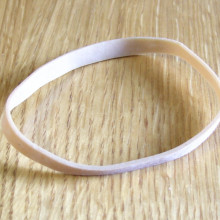
Rubber Fridge - Why elastic bands get cooler as they shrink!

What happens when a neutron star collapses?
A normal star is a big ball of gas, its gravity is pulling it together, trying to make it collapse. It's actually held up because it's really, really hot. In the same way that, when a gas is hot it expands, the star's temperature allows it to expand and stay fairly big.
But when the star gets really old it can explode: what leads to this is that, eventually, it will have burned most of its fuel and it cools down a bit. It starts to collapse under its own gravity. Stars which are massive enough then start to crush the protons and electrons to form neutrons. These form a huge star-sized atomic nucleus, basically just neutrons, known as a neutron star.
A normal star can collapse into a neutron star. If a neutron star slowly gathered more and more mass then it could collapse again whereby the neutrons couldn't support themselves. It would start to get crushed together and it would get so heavy and dense that it would turn into a black hole.
A black hole is where you get so much mass in one place it distorts space so much that even light can't escape; this will happen whatever the internal structure of the black hole.
We don't know anything about the internals of black holes, and in fact they won't affect anyone outside the black hole, so as far as we can tell a black hole is as far as anything can collapse.
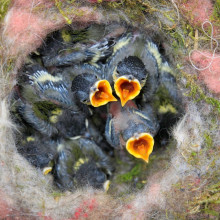
How do birds recognise fat balls as food?
Helen Scales answered this question for us...
Birds are quite adaptive when it comes to people and the kinds of foods we give them.
Here in the UK there's a wonderful phenomenon that happened. Since 1921 a thing which we no-longer have, glass bottles of milk sitting on our doorsteps with milk that wasn't homogenised, had this wonderful creamy chunks floating up to the top.
For the first time in 1921 someone saw a blue tit pecking at that top, the silver foil top of the milk bottle to drink the cream. If that isn't a more unnatural food-source for birds, I don't know what is.
What actually happened, and people studied how this behaviour spread around England, by the 50s and 60s birds all the way around England had learned how to do it. It always seems like it came to a new area and all the birds in that area would learn how to do it. It's this phenomenon that spread around.
I think birds do know how to adapt very much to different types of food that we give them. Suet, I think, is actually meant to be a very good type of food for birds, especially in winter.
The RSPB here in the UK - the Royal Society for the Protection of Birds - on their website they do recommend putting out suet. I don't think that's a problem.
I think birds can eat other animals, it's all right but I understand your concern. I think birds really are quite adaptable. They'll have a go and if it tastes good they'll realise it's got nutrients and energy in it then they'll take it and they'll eat it!

Why is space so cold?
That's quite a deep question, If you go back to the big bang, if you look in any direction, you'll see something. If you look in any direction far enough and there's no stars in the way, you'll see a big soup of atoms which were created after the big bang. This light was emitted when electrons were collected by hydrogen atoms. When they did that they released lots of energy and photons, very high energy light. This is well into the gamma rays. Because the universe has expanded so much and these gamma ray photons which are incredibly hot, thousands and thousands of degrees centigrade, have slowly been stretched as the universe has stretched. Their wavelength has got longer and longer. With that they've got colder and colder because longer wavelengths are lower energies. They've got stretched so much that their temperature is about 2 or 3 degrees above absolute zero. It's about -270 degrees centigrade.
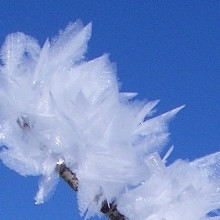
Does ice evaporate?
This is a really good observation and it's absolutely true. Your ice cubes will lose volume in your freezer over time.
The reason is, although they're frozen - literally the water molecules have been joined together to form ice - what actually is going on (if you could zoom in with a very powerful microscope and watch the energy in ice) is that the ice is sharing out all the energy - even though there's a lot less of it because it's cold - amongst all the water molecules in the crystal. And it's random. Every so often there'll be some water molecules that have enough energy to vibrate or escape free from the surface of the ice.
At the same time, other water molecules will rejoin onto the ice, and this is what's called a dynamic equilibrium.
So, every so often, you'll get a molecule of water which will gain enough energy to spring off of an ice cube and it might well form some ice elsewhere in the freezer or just fall out of the door. Over time, since we've got a lot of something (water in the form of ice) it will slowly diminish and shrink. It will slowly disappear.
Some water goes in from time to time, for instance if you open the door and you've got a stuffy room. But, basically, it's because there's a dynamic equilibrium going on with some of the ice losing water molecules as they gain energy.
The same process actually happens in reverse to form snow flakes. The snow flake is actually formed by this process known as deposition. Water vapour deposition forms ice crystals directly without going through a liquid; otherwise it would be little balls. It goes straight to form ice crystals and you get the beautiful crystals in snow flakes.
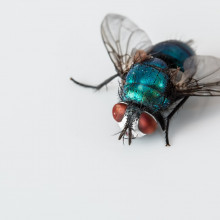
Do houseflies hibernate?
No, I don't think flies do go on holiday, they don't migrate. Flies only live for a maximum of two months but usually only about 15-24 days.
There's a possibility that some of them might hang on until winter, but they generally do much better when it's warmer.
They can survive over winter and that's actually another stage in their lifecycle which is as larvae or pupae.
What happens with flies is they will lay eggs which hatch into larvae, otherwise known as maggots, which is lovely. They will be alright when the temperature drops and they'll hang around in food and faeces and things like that. Lovely. If you've got a pile of horse manure in your garden they might hang out there.
The larvae grow and then they will pupate so they will wrap themselves up in a tight little packet which will then sit around and survive the winter. That hatches into an adult.
So the ones you've seen in winter you've notice are quite slow. They don't fly so quickly - much easier to swat. They're really the ones from the tail-end of the summer population waiting to regrow again in the spring time.

26:21 - Probo - the robot for Sick Children
Probo - the robot for Sick Children
with Chelsea Wald, Ivan Hermans
Chelsea - I have someone I'd like to introduce you to. Dr Chris, this is Probo. Probo, this is Dr Chris.
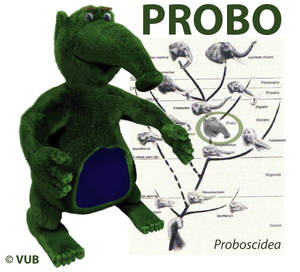 Chris - If I'm honest Chelsea, that doesn't make an enormous amount of sense to me, what he's saying.
Chris - If I'm honest Chelsea, that doesn't make an enormous amount of sense to me, what he's saying.
Chelsea - That's because Probo's not speaking any real language. This is, in fact, Probo. You see he's an intelligent robot being developed at the Flemish University in Brussels. When he comes together he's going to interact with sick children in the hospital. The language they're developing for him is something like the Teletubby's. It doesn't really mean anything specifically but it has emotional meaning.
Chris - Can this robot respond to the children and react to the way they behave with him?
Chelsea - Yes. The idea is that Probo will help children by reading their emotions through their facial expression and their tone of voice. The Probo will respond in some sort of comforting way. That could either be by mirroring the kid's emotions like anger or fear or by expressing a different emotion like contentment. Psychologists will work on that part.
Chris - What does he actually look like, Probo?
Chelsea - That's an interesting question. Probo's designers put him in the order of proboscidea which also includes elephants, mastodons and mammoths. Basically he's green. He stands on two legs and has a trunk. He'll also have an interactive video display in his belly that could allow the child to talk to his family and friends. This is what the person who came up with the idea of Probo, Ivan Hermans, has to say about the video screen.
Ivan - I think that it will be a tool of communication in the future because when kids are going to the hospital they cannot go to the class any more. They miss their environment. That will be a tool of communication. I think that's very important that they can speak with their grandparents, with the school. When you have to go to the hospital they cut all the social contacts.
Chelsea - The video screens will also provide a new way for the doctors to interact with the child. For example, asking how much pain the child's in. the kids might also get information about procedures they're about to go through. In effect the idea is that Probo will eventually be like a psychological counsellor as well as an entertainer and a companion. Here's Ivan Hermans again.
Ivan - I think because the robot will be there 24 hours and a child's not feeling well you want to be alone, I think. Not with the parents, not with the doctors. With the robot he can be like a companion. I think that's important.
Chris - At what stage of development is he at now, Chelsea?
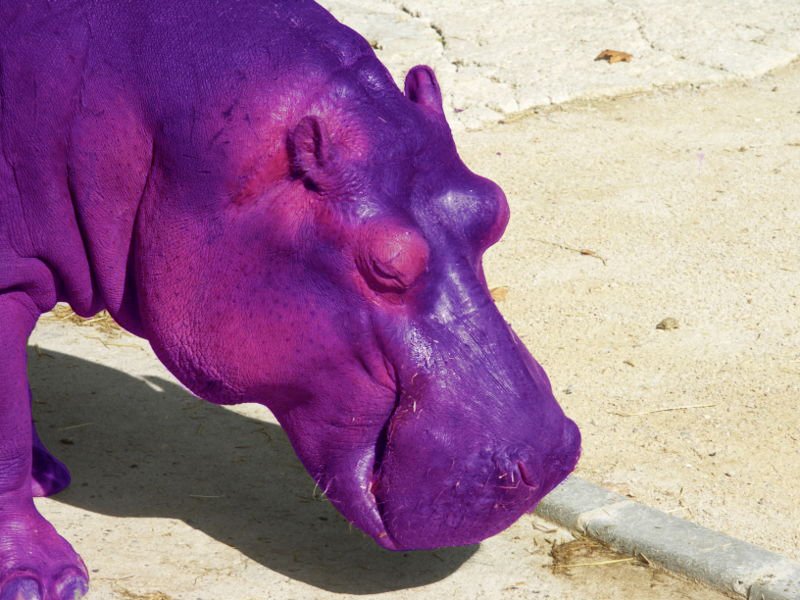 Chelsea - Well, Probo's still at a very early stage. They hope to have the first prototype in hospitals by the end of this year. He will still have some sort of operator like a puppeteer. He won't have his own artificial intelligence in place yet. They just recently got the first full-size body which is basically just a stuffed animal body. They're going to rip into it and put the moving parts inside. They're doing all the robotics on the principle of compliant actuation which means basically that the parts aren't rigid. Everything is designed to be soft and safe for kids. If the kids grab at his trunk, for example, it would bend very easily but it would go back to its original position when they let go.
Chelsea - Well, Probo's still at a very early stage. They hope to have the first prototype in hospitals by the end of this year. He will still have some sort of operator like a puppeteer. He won't have his own artificial intelligence in place yet. They just recently got the first full-size body which is basically just a stuffed animal body. They're going to rip into it and put the moving parts inside. They're doing all the robotics on the principle of compliant actuation which means basically that the parts aren't rigid. Everything is designed to be soft and safe for kids. If the kids grab at his trunk, for example, it would bend very easily but it would go back to its original position when they let go.
Chris - Which is, of course, very important. Is this just for the hospital market because I can think of lots of parents who would probably quite like some sort of companion for their children when they're unwell?
Chelsea - That's certainly a possibility though at first someone would have to be pretty rich to buy one of these, I think. They're also thinking that Probo would be helpful for caring for the elderly though they think they'll have to design a new appearance for him. Kids really love the way he looks and they helped design Probo but older people seem to find him a bit too strange.
Chris - So you think the Florence Nightingale look for the elderly consumer then?
Chelsea - Possibly, I don't know. Maybe a purple hippopotamus, who knows?
Many thanks to Selma Yilmazyildiz and Kristof Goris of the Vrije Universiteit Brussels. For more information on Probo you can visit the
ANTY Project Website.
Ivan Hermans is president of
the Anty Foundation.
Was there a black hole at the big bang?
No one actually knows what preceded the Big Bang. All we know is that when the Big Bang happened there was this massive amount of energy in a tiny amount of space. It appears that space itself has been expanding since the big bang so before then as far as we know there was no space. So we have no idea what was going on before the big bang.
Whether all of the mass all in one place at the big big should have created a black hole, or whether we would know if it did, I'm not sure.
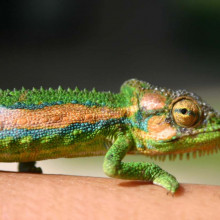
Is there a metabolic cost to the generation of bright colours in animals?
It's a very good question and you're absolutely right and there are pigments that animals use to attract mates. That's generally what it's all about. These are molecules that are quite costly to create. Not to mention the fact that you also look more obvious to things like predators. This was a question that someone, a guy called Geoffrey Hill looked at. He's from the University in Alabama. He looked at house finches that grow colourful feathers in yellows and orange and reds using carotenoid pigments. Similar to what Dave was talking about earlier. What he did was he actually fed a bunch of house finches with these types of pigments in water. He fed half of these birds lots of food so they were nice and happy and were doing great. The other half he restricted their diets, which wasn't very nice. Basically he wanted to know what the difference was when they did and didn't have enough food to eat. As you might imagine, the ones that didn't get enough food were much more drab than the ones that had lots of food who grew lots of night, shiny colourful feathers. That's a really good way of showing to us that yes, producing pigments is expensive in food and if you haven't got enough food to do that then you tend to not be able to produce such brightly coloured feathers.

When you look at individual atoms, what are you actually seeing?
That kind of image was probably from a scanning-tunnelling electron microscope on which you get a very sharp point where it's so sharp it's probably only got one or two atoms on the end. They scan that very slowly across the surface of a material. With a scanning-tunnelling electron microscope you measure the amount of electric current going between that and the material. You apply a tiny voltage, measure the current between that tip and the surface. You're actually measuring the resistance of the surface. There are other similar images where you can measure the force on that tip. You're basically measuring the force between the end of the tip and the surface at the bottom. If the atoms are higher up the force will go up and vice versa.

Why does your stomach get left behind when an aeroplane drops?
Aeroplanes suddenly drop and you feel weightless. You are almost becoming weightless, normally your stomach is being held up by your body, but if your body is falling at the same rate as your stomach wants to fall under gravity all of a sudden the supporting tissues can relax, pulling your guts upwards.
Your guts and your viscera are quite heavy. They're also hanging inside you so your stomach hangs down below your diaphragm and it's connected to your guts. Everything is pretty much mobile. If you do an operation on a patient it's always amazing to think that when we used to open people up for appendicitis or something you can see the guts writhing around themselves. It's not dramatically fast like a snake pit or something but you can actually see them moving. Everything is mobile, it's gotta be like that to enable things to move. The guts have to be able to stretch to take in things and shrink again when things move through them. Because it's all not fixed inside you if you go over a bump when the car or aeroplane drops on the other side of the bump your body is a bit left behind for a little while. There's enormous number of stretch receptors and vibrations sensors in your guts. That's why people talk about having a gut feeling for something. It's very true. A lot of the frequencies that we get from the world around us, the low frequency vibrations are felt in your abdomen and you think you're sensing them from your abdomen but enormous amounts of that information comes from your gut. It's a gut feeling, quite literally. Because those stretch receptors get excited when your guts literally fly up in the air with your body moving down around them. As a result it does feel like you have a sort of sinking feeling. The other reason you get a sinking feeling is because you might get a bit frightened. When an aeroplane suddenly drops you can have that moment of terror, 'Oh my god, is the aeroplane gonna drop out of the sky?' What happens then is you get a little surge of adrenaline. Your sympathetic nerve system kicks-in in a very big way. That's the part of the nerve system that gears you up if you're going to run away or have a big fight with someone. That produces lots of adrenaline and adrenaline powerfully switches off your guts because the one thing you don't want to be doing when you're trying to run away is wasting your blood supply feeding your guts. You want your blood going to your muscles and your lungs every other part of your body when you need to run away of fight. So you turn off your guts and that turn-ff signal gives you that sinking feeling or the butterflies you get in your stomach so it could be possible a combination of the two effects, I reckon.
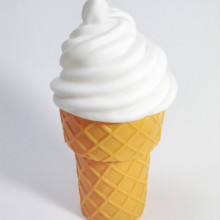
What temperature would a cube of ice be in the Arctic?
If the sides are just made of solid ice then it will behave just like a box made of anything else or made of stone or anything. Slowly over time it will cool down to the same temperature as the air around it. However if you had a box of ice filled with water then instead of the water cooling down when heat is taken out of it from the cold environment outside it will create ice. Slowly the water inside it will freeze and as long as there's water in there that water can't be much below 0 degrees centigrade. If you had a box of ice full of water then it would be zero and as soon as it freezes then it could get below that.
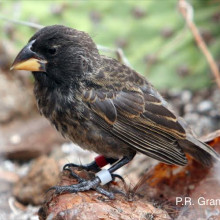
Do drab animals live longer?
I don't think so. I think the point is they're not doing so well anyway because they've got less food. In nature I suppose if they did want to live longer by not having such fancy feathers it might give you a bit of a helping hand. That's something I think we need to study as well because I think that guy was keeping those creatures a bit hungry. I don't suppose they would have lived as long!
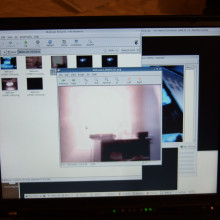
Twitter
with Chris Vallance
Meera - Well it's time to catch up with the latest developments in the world of technology. I've come down to London for a coffee with our resident expert Chris Vallance. So Chris, there seems to have been a lot of chat about this website twitter but what exactly is it?
Chris V - I think Twitter is the new Facebook, that's the buzz but what is twitter? Twitter is a way of posting shirt, epigrammatic messages online: 140 characters or less. It's called a microblogging format. It basically allows you via instant message, via the web, via your phone, to blog little short messages 'what are you doing?' and share those messages with your friends, with people who follow you online. It's a very short, simple way of posting stuff to the net. It did launch quite a while ago but since then its grown. It's become something of a global phenomenon.
Meera - But it's not just the one site, is it? It seems to have branched out into quite a few side projects.
Chris V - One I quite like is called Twitter Local. What is does is it lets you see all the posts, all the little messages people have written in a particular area. This is fascinating because you can explore the whole globe in this way.
Kevin Tumer - I live and work in Afghanistan. Twitter lets me share information with friends and colleagues quickly. If there's any sort of trouble I can send out a quick warning. The other morning there were about ten or twelve loud explosions that shook Kabul so I sent out a tweet asking for information from my friends. A couple of minutes later I was able to get a reply. It turns out the explosions were just the armoury practising for independence day.
James Buck - As I'm sure you know there've been these riots happening in Egypt and around the world due to rising food prices. We got apprehended by these police officers and taken to prison. I had set up ahead of time a sort of emergency call to my friends and a mass sms to my twitter and to my Egyptian friends. As soon as I was apprehended I sent the word arrested to that whole network and being able to raise that awareness and to let people know where I was saved me from disappearing into a black hole.
Kamela Bhat - I divide my time between the US and India. I find that twitter is a strong digital umbilical cord for me. Interestingly, news channels in India appear to have discovered Twitter. For instance, there is IBN live that has started a Twitter feed and that's a great way to find out what is happening in India.
Chris V - As you heard on the tape there, James Buck actually used Twitter. He was in Egypt, he is arrested by the police. He Twitters the word arrested and his friends spring into action and raised the profile of his case, gained legal assistance. It's an interesting site. I guess the analyses of trends on it are quite interesting.
Meera - This kind of thing has branched out to other social networking sites though hasn't it?
Chris V - We spoke about Facebook earlier. There's a new service for Facebook launched April 15th. It's called lexicon and lets you search people's wall posts for popular terms and graph those. For example I've put in BBC and Wikipedia to see what was more often cited on people's Facebook profiles. It turns out Wikipedia just about edged us.
Meera - That surprises me, actually.
Chris V - Well, I think obviously Wikipedia linked back to a lot of other news sources so you could argue the toss that way. Getting back to Twitter, we're starting to see a kind of explosion in these services built on the data that Twitter generates. There's another one called Twitter URLE. What it does is the most popular links on Twitter. So you can see what people are linking to in their posts most frequently. One of the most popular was Twitter twerp finder. As Twitter grows more and more spammers, people with a commercial interest, are jumping in as well. That was a service that tries to help you identify who the spammers are and knock them out of your list of friends and followers.
Meera - That's quite useful.
Chris V - Yes it is although it's quite a crude way of calculating who is a twerp in their language. It will be interesting to see how it works in the longer term.

45:06 - Olympic Torch In Flight?
Olympic Torch In Flight?
Jordan Parham, part of the team that worked on the Sydney, Athens and Asian games torches. How they keep the flame alight on aeroplanes and therefore continuous along the whole relay journey is in miners' lanterns. These miners' lanterns are specially designed to maintain a small flame alight in all wind conditions. They actually carry four of these lanterns at a minimum as back-up flames for the mother flame at all times during the relay. When they take the flames onto an aeroplane the miners' lanterns are approved prior to taking them on by the commercial airline or by the chartered airline, depending on how they run the relay. They are then stored in an appropriate vessel. In the case of the Sydney Olympics that was a specially designed seat and in other games such as Athens and the Asian games they used specially-designed storage racks on the side of the aeroplane. These miners' lanterns don't create any emissions. The fuel is a methylated spirits type flame to keep it burning, it won't create any risk to any other occupants. That's how they keep the flame alight on the aeroplane.

Why do painted rays swim along with their nose out of the water?
It's possible that these stingrays were after food because they do tend to get fed a lot and they could have been sniffing around for that but there's also been thoughts that similar creatures to the stingrays which are the sharks, because they're quite closely related, might possibly have the ability to sniff the air. There was a study in Russia in 1994 about oceanic white tips which are quite dangerous sharks, not very dangerous but quite dangerous that go through open ocean. They were seen to sniff above the surface of the water, a similar thing in great white sharks. The scientists looked at this sensory part of their snouts and they think there is a possibility they were actually detecting scents in the air that would move more quickly in the air than in water. Volatile chemicals will disperse much more quickly so perhaps they were doing much better than their competitors at smelling things like dead whale carcasses that wouldn't be so smelly underwater.
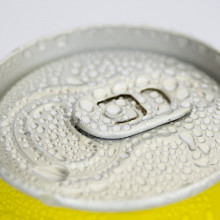
Why do they use CO2 in fizzy drinks?
There are a number of reasons for using carbon dioxide - CO2 - in fizzy drinks...
One of them is that carbon dioxide dissolves really quite well compared with nitrogen. Nitrogen will barely dissolve: it's very insoluble; you have to make nitrogen work quite hard to dissolve and that's why when you get the bends after you surface quickly from diving - it's the nitrogen that bubbles out of your blood and causes the bends because it just doesn't want to dissolve.
But carbon dioxide - CO2 - does dissolve, which is critical for making a drink fizzy.
The other thing that carbon dioxide does when it goes into water - and one of the reasons it dissolves quite well - is it reacts with water to make carbonic acid - H2CO3.
So, CO2 plus H2O goes to H2CO3, that's carbonic acid. That carbonic acid dissociates into H+ (that's the acid bit, the hydrogen ions) plus HCO3- - bicarbonate. When you have acids in a liquid, acids taste "lemony". So you get this very nice lemon flavour added to the drink.
So the carbon dioxide not only dissolves well so you can get your drinks really fizzy and get your gases in, it also means it tastes nicer. And you can get lots of gas dissolving so it comes out gently in the drink. It stays fizzier for longer.
Also it's free. You can get carbon dioxide from the brewing industry - yeast produces it as a waste product - so and you don't even have to purify it. You can just get it off the yeast and use it to make your drinks fizzy...
Related Content
- Previous Olympic Flame in Flight
- Next Drinking Rain and Evolving Apes










Comments
Add a comment